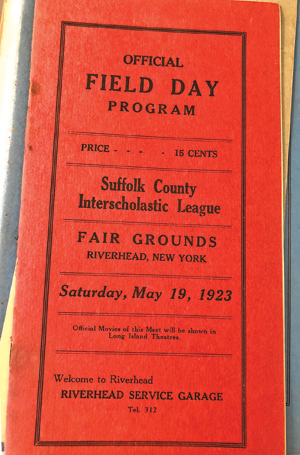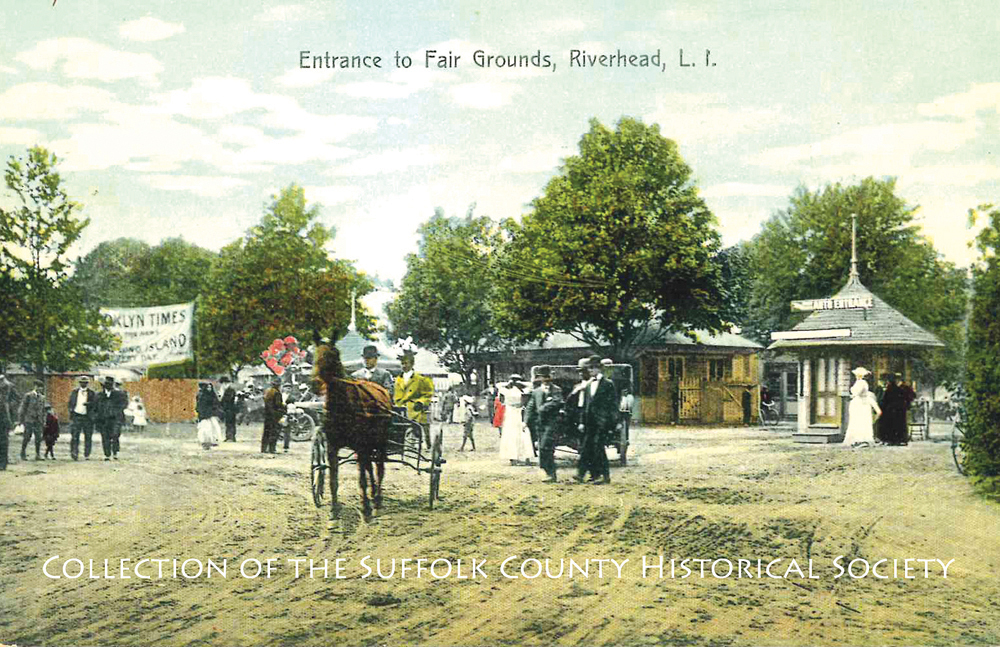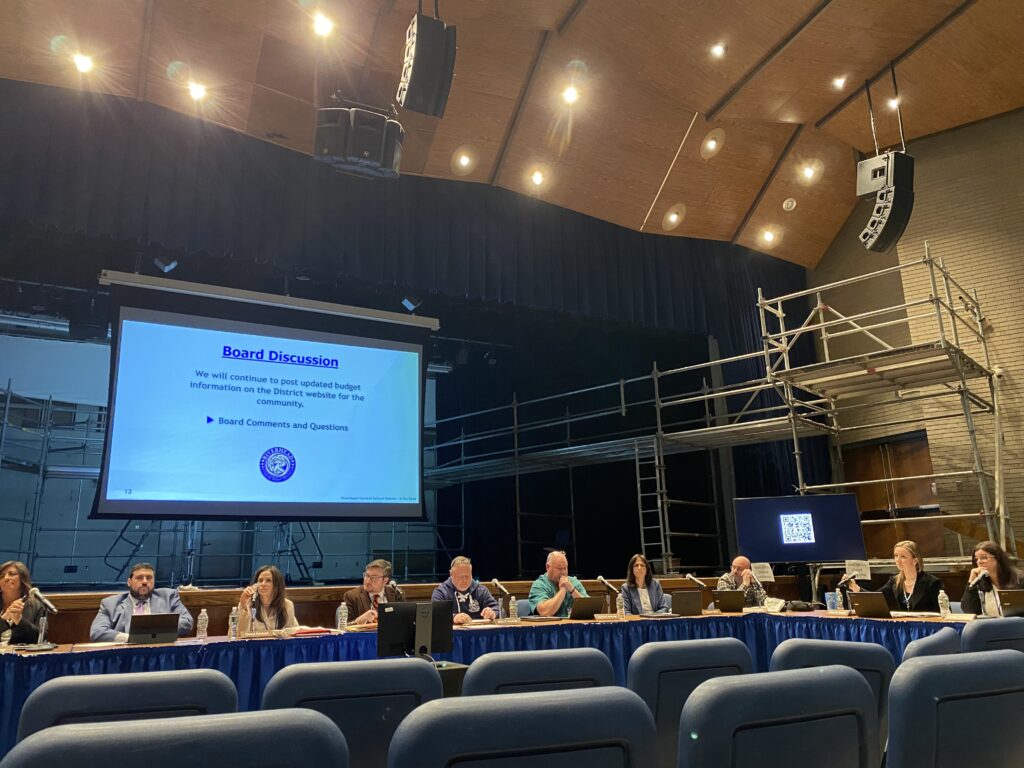School board member hopes to add plaque at fairgrounds site

For 75 years, the Suffolk County Fair was held on 20 acres in Riverhead owned by the Suffolk County Agricultural Society.
Purchased in 1868 for $1,650, the land on Pulaski Street was home to the week-long fairs, which featured horse and bicycle racing and numerous agricultural competitions.
The fair was visited by future president Theodore Roosevelt in 1895, and New York Yankees legend Babe Ruth allegedly hit a grand slam during a baseball game there in 1923.
Sports remain a key aspect of the site now as the home of Coach Mike McKillop Memorial Field, where generations of football players have worn their blue and white uniforms. The Riverhead School District purchased the property in 1934 and it’s also occupied today by Pulaski Street School and the district bus barn.
With the property’s rich history in mind, Riverhead Board of Education member Laurie Downs met with Legislator Al Krupski in January to discuss the possibility of memorializing its historical significance with a plaque.
Mr. Krupski confirmed the meeting and said that, after conducting research, recognizing the property’s past “appeals to so many of us, in this case from the agricultural fairs to Babe Ruth playing baseball. This is a work in progress, but something worth pursuing.”
The agricultural fairs began after the Suffolk County Agricultural Society purchased the property and accompanying half-mile track from Riverhead Town. The society agreed to hold a fair there for two consecutive years. If it failed to do so, the property would be sold, town historian Georgette Case wrote in her book “Greetings From Riverhead.”
 The fairs were successful, drawing 15,000 visitors from across Long Island, according to a clipping from the Sept. 10, 1920, issue of the Riverhead News.
The fairs were successful, drawing 15,000 visitors from across Long Island, according to a clipping from the Sept. 10, 1920, issue of the Riverhead News.
“In 1897 a Long Island Rail Road ticket to come to Riverhead, two-ways from Brooklyn, was $1,” said Ms. Downs, who began researching the land’s history years ago as part of school project for her kids. “That was a lot of money back then. The fair wasn’t just one or two days; the fairs were like a week long.”
In addition to horse and bicycle races at the fairgrounds — which featured a poultry hall, machinery and vegetable halls as well as a grandstand and judges’ stand at the racetrack — prize ribbons were awarded for best pies, pickles, cakes, jams, baked beans, vegetable dishes and more, Ms. Case wrote.
In the horse racing, a winning trotter, a race in which jockeys ride in a cart behind the horse, earned $100. Some winners in other races earned $300 to $500. Horses with names like Nan, Paris, Ellen and Cyclone came with their owners from Long Island, New Jersey and even as far away as Alabama to compete, Ms. Case wrote.
But the agricultural society didn’t just host contests at the annual fair.
It was reported in 1901 that about 6,000 people gathered there for a memorial service for President William McKinley, who had been assassinated Sept. 6.
The Shelter Island band played selections and Rev. Joseph A. Fisher of Riverhead M.E. Church offered a “touching prayer.” The thousands of mourners also joined together to sing “America,” The Brooklyn Daily Eagle reported at the time.
And when “The Bambino” came to town, all the schools shut down so the students and teachers could see Babe Ruth play, Ms. Downs said. She said it was a special event because most people couldn’t make the trek to the city to see a game; they’d only heard Mr. Ruth play on the radio and had never actually seen the legend in action.
The site made headlines in 2015 when the school district completed a renovation of the football field and added new bleachers, which were erected over the faded track.
Ms. Downs said she doesn’t have one specific piece of history that she likes best, instead finding interest in every little fact she’s uncovered about the property over the past few years.
“I just think the history in itself is amazing,” she said. “It’s Suffolk County’s history, it’s Riverhead’s history, it’s the North Fork and the agricultural history. It hits a bunch of different things.”









